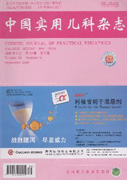|
|
Study of viral etiology of acute lower respiratory tract infection in children.
LIU Chun-yan,XIE Zheng-de,Richard Gonzalez,REN Li-li,KONG Xiao-hui,HU Ying-hui,YAO Yuan,YANG Yan,QIAN Su-yun,GENG Rong,SHEN Kun-ling,WANG Jian-wei.
2009, 24(04):
270-273 .
Objective To investigate the viral pathogens of lower respiratory tract infection (ALRTI) in children. Methods Totally 572
children with clinical diagnosis of ALRTI during the period of March 2007 to February 2008 were involved in our study. One nasopharyngeal
aspirate specimen was collected from each patient. (RT) PCRs were performed to detect common respiratory tract viruses including
respiratory syncytial virus (RSV), rhinovirus (RV), influzenza virus type A and B (IFA, IFB), parainfluenza virus (PIV) type 1-4
, adenovirus (AdV), enterovirus (EV), human coronavirus (HCoV), human metapneumonia virus (hMPV) and human bocavirus (HBoV).
Results At least one viral pathogen was detected in 444 out of 572 patients and the overall positive rate was 77.6%. The most common virus
was RSV (48.3%), followed by RV (27.1%) and PIV (13.3%). The etiological spectrum of ALRTI varied in different age group. RSV, RV and
PIV were the most predominant pathogens in children less than 5 years old while RV, IFV and RSV were the most common pathogens in children
older than 5 years of age. Two or more viruses were identified in 158 out of 572 cases. The mixed infection rate was high (40.2%) in
infants under 1 year old while it decreased to 14.0% in children older than 5 years of age. Conclusion RSV, RV and PIV are the most
predominant pathogens in children less than 5 years old while RV, IFV and RSV are the most common pathogens in children older than 5 years
of age in Beijing area.
|

